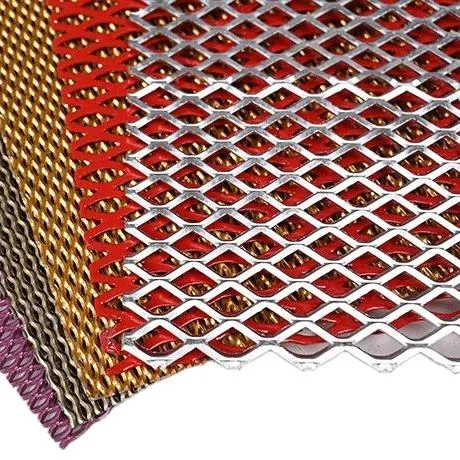Exploring Expanded Mesh Panels A Versatile Solution for Modern Design
In the realm of architectural design and construction, materials play a pivotal role in shaping not only the aesthetic appeal but also the functionality and resilience of structures. Among the innovative materials that have gained prominence in recent years is expanded mesh panels. These versatile components are increasingly being adopted across various industries, including construction, interior design, and manufacturing. This article delves into the features, benefits, and applications of expanded mesh panels, highlighting why they are becoming a favored choice among architects and designers.
What Are Expanded Mesh Panels?
Expanded mesh panels are sheets made from a single piece of material, typically metal such as aluminum or stainless steel, that have been mechanically expanded to create a network of interconnected holes. This manufacturing process transforms flat material into a lightweight, yet highly durable structure, allowing for a wide range of openings and patterns. The result is a panel characterized by its robustness, aesthetics, and multifunctional capabilities. Availability in various thicknesses and sizes makes expanded mesh panels highly customizable to fit specific project needs.
Advantages of Using Expanded Mesh Panels
One of the key benefits of expanded mesh panels is their ability to provide strength without significant weight. This characteristic makes them ideal for applications where reducing overall structure weight is critical. Moreover, expanded mesh is inherently resistant to corrosion, especially when fabricated from materials like galvanized steel or stainless steel. This resistance enhances their longevity, making them suitable for both indoor and outdoor environments.
The versatility of expanded mesh panels extends to their aesthetic appeal. With customizable patterns, colors, and finishes, they can be tailored to complement various design styles, from modern to industrial. This flexibility allows architects to use expanded mesh panels not only as functional components but also as striking visual elements that enhance the character of a space.
expanded mesh panels

Another significant advantage is the ability of expanded mesh to facilitate air and light circulation. The open structure allows for natural ventilation and light penetration, making these panels ideal for applications where airflow is essential, such as facades, balustrades, and ceiling installations. This promotes energy efficiency in buildings, as it reduces reliance on artificial lighting and air conditioning.
Applications of Expanded Mesh Panels
The applications of expanded mesh panels are diverse, reflecting their adaptability across industries. In architecture and construction, they are commonly used in facades, sunshades, and screens, where they combine aesthetic value with functional performance. They can also serve as protective barriers, preventing debris from entering spaces while maintaining visibility.
In interior design, expanded mesh panels find their way into decorative elements such as room dividers, feature walls, and ceiling tiles. Their unique patterns can add a contemporary flair to residential and commercial spaces, making them popular among designers looking to create captivating environments.
Additionally, the manufacturing industry leverages expanded mesh for various purposes, including filtering, grating, and security applications. In the automotive and aerospace sectors, they are utilized for structural components due to their strength-to-weight ratio. The food industry also benefits from expanded mesh, using it for racks and shelving that require both durability and hygiene.
Conclusion
Expanded mesh panels represent a fusion of functionality and style, making them a valuable asset in modern design and construction. Their myriad advantages, including strength, aesthetic versatility, and effective airflow, render them suitable for a wide range of applications across multiple industries. As architects and designers continue to explore innovative materials to meet the demands of contemporary building practices, expanded mesh panels stand out as a highly effective and adaptable solution. With their promising capabilities, it’s clear that expanded mesh will continue to play an essential role in shaping the future of architectural design.
-
Turn Down the Noise: The Future of Highway Sound Barriers
NewsApr.09,2025
-
Silence the Sound: The Power of Highway Noise Barriers
NewsApr.09,2025
-
Reduce Road Noise Effectively with Highway Noise Barriers
NewsApr.09,2025
-
Noise-Free Living: How Highway Barriers Make a Difference
NewsApr.09,2025
-
Engineered for Silence: Highway Noise Barriers for Every Road
NewsApr.09,2025
-
Effective Noise Control: Highway Barriers for a Quieter Tomorrow
NewsApr.09,2025
Subscribe now!
Stay up to date with the latest on Fry Steeland industry news.

